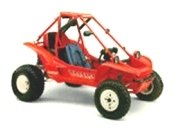
PilotOdyssey.com

 |
PilotOdyssey.com |
|
| It is currently Wed May 14, 2025 6:37 pm |
|
All times are UTC - 5 hours [ DST ] |
 
|
Page 1 of 17 |
[ 402 posts ] | Go to page 1, 2, 3, 4, 5 ... 17 Next |
|
| Author | Message | ||||||
|---|---|---|---|---|---|---|---|
| Turbotexas |
|
||||||
|
Joined: Sun Jul 16, 2006 8:46 am Posts: 5257 Location: Seguin, TX (near San Antonio) |
|
||||||
| Top | |
||||||
| hoser |
|
|||
|
Joined: Mon Dec 15, 2003 2:40 pm Posts: 22617 Location: Chicago |
|
|||
| Top | |
|||
| Turbotexas |
|
|||
|
Joined: Sun Jul 16, 2006 8:46 am Posts: 5257 Location: Seguin, TX (near San Antonio) |
|
|||
| Top | |
|||
| Turbotexas |
|
|||
|
Joined: Sun Jul 16, 2006 8:46 am Posts: 5257 Location: Seguin, TX (near San Antonio) |
|
|||
| Top | |
|||
| Turbotexas |
|
|||||
|
Joined: Sun Jul 16, 2006 8:46 am Posts: 5257 Location: Seguin, TX (near San Antonio) |
|
|||||
| Top | |
|||||
| Turbotexas |
|
|||||
|
Joined: Sun Jul 16, 2006 8:46 am Posts: 5257 Location: Seguin, TX (near San Antonio) |
|
|||||
| Top | |
|||||
| Turbotexas |
|
||||||
|
Joined: Sun Jul 16, 2006 8:46 am Posts: 5257 Location: Seguin, TX (near San Antonio) |
|
||||||
| Top | |
||||||
| Turbotexas |
|
|||
|
Joined: Sun Jul 16, 2006 8:46 am Posts: 5257 Location: Seguin, TX (near San Antonio) |
|
|||
| Top | |
|||
| Turbotexas |
|
|||
|
Joined: Sun Jul 16, 2006 8:46 am Posts: 5257 Location: Seguin, TX (near San Antonio) |
|
|||
| Top | |
|||
| hoser |
|
|||
|
Joined: Mon Dec 15, 2003 2:40 pm Posts: 22617 Location: Chicago |
|
|||
| Top | |
|||
| Turbotexas |
|
|||
|
Joined: Sun Jul 16, 2006 8:46 am Posts: 5257 Location: Seguin, TX (near San Antonio) |
|
|||
| Top | |
|||
| hoser |
|
|||
|
Joined: Mon Dec 15, 2003 2:40 pm Posts: 22617 Location: Chicago |
|
|||
| Top | |
|||
| Turbotexas |
|
|||
|
Joined: Sun Jul 16, 2006 8:46 am Posts: 5257 Location: Seguin, TX (near San Antonio) |
|
|||
| Top | |
|||
| hoser |
|
|||
|
Joined: Mon Dec 15, 2003 2:40 pm Posts: 22617 Location: Chicago |
|
|||
| Top | |
|||
| Turbotexas |
|
|||||
|
Joined: Sun Jul 16, 2006 8:46 am Posts: 5257 Location: Seguin, TX (near San Antonio) |
|
|||||
| Top | |
|||||
| hoser |
|
|||
|
Joined: Mon Dec 15, 2003 2:40 pm Posts: 22617 Location: Chicago |
|
|||
| Top | |
|||
| Turbotexas |
|
|||
|
Joined: Sun Jul 16, 2006 8:46 am Posts: 5257 Location: Seguin, TX (near San Antonio) |
|
|||
| Top | |
|||
| hoser |
|
|||
|
Joined: Mon Dec 15, 2003 2:40 pm Posts: 22617 Location: Chicago |
|
|||
| Top | |
|||
| Turbotexas |
|
|||
|
Joined: Sun Jul 16, 2006 8:46 am Posts: 5257 Location: Seguin, TX (near San Antonio) |
|
|||
| Top | |
|||
| Turbotexas |
|
|||||||
|
Joined: Sun Jul 16, 2006 8:46 am Posts: 5257 Location: Seguin, TX (near San Antonio) |
|
|||||||
| Top | |
|||||||
| mudbogger |
|
|||
|
Joined: Tue Dec 23, 2003 10:31 pm Posts: 5559 Location: New Jersey |
|
|||
| Top | |
|||
| Turbotexas |
|
|||||
|
Joined: Sun Jul 16, 2006 8:46 am Posts: 5257 Location: Seguin, TX (near San Antonio) |
|
|||||
| Top | |
|||||
| hoser |
|
|||
|
Joined: Mon Dec 15, 2003 2:40 pm Posts: 22617 Location: Chicago |
|
|||
| Top | |
|||
| hoser |
|
|||
|
Joined: Mon Dec 15, 2003 2:40 pm Posts: 22617 Location: Chicago |
|
|||
| Top | |
|||
| MassOdy |
|
|||
|
Joined: Sun Dec 21, 2003 11:24 am Posts: 805 Location: Bolton Ma |
|
|||
| Top | |
|||
 
|
Page 1 of 17 |
[ 402 posts ] | Go to page 1, 2, 3, 4, 5 ... 17 Next |
|
All times are UTC - 5 hours [ DST ] |
Who is online |
Registered users: Baidu [Spider], Bing [Bot], Google [Bot] |
| You cannot post new topics in this forum You cannot reply to topics in this forum You cannot edit your posts in this forum You cannot delete your posts in this forum You cannot post attachments in this forum |